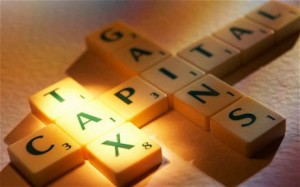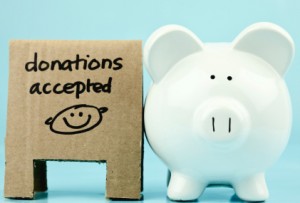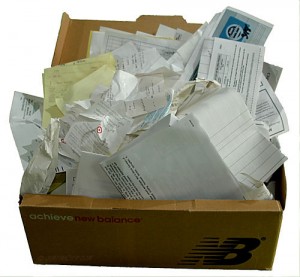The Mystical Spousal RRSP
Most people have heard about it. Some think they need it. Few actually understand it. That is the Spousal RRSP. It’s one of the most common questions I get every year during tax season. I’ve noticed that various financial institutions understand the general concept of what it is, but lack insight into the finer details. And of course the devil is always in the details.
As a quick reminder, in order to claim an RRSP deduction for the 2013 tax year, contributions have to be made by March 3, 2014 (typically this date is March 1 of the following calendar year, however in 2014 March 1st falls on a Saturday, so Canadians have until the next business day to make their contribution and deduct it on their 2013 income tax return).
So, back to this Spousal RRSP thing.
What is it? Quite simply, a Spousal RRSP is where you make an RRSP contribution but your spouse becomes the owner of the account.
I’m a nice personal and all, but why would I want to give my spouse my RRSP Contribution? Isn’t my spouse already entitled to 1/2 of my assets anyways? Well, in certain circumstances, it provides a mechanism to split income with your spouse during retirement and not ruffle the feathers of the good folks over at CRA (I’ve put the word “good” in just in case they are reading this!).
Why would I want to split income during retirement you ask? Great question. If you and your spouse are expecting to have significantly different incomes during retirement, the spouse with the higher income will pay lots of tax and the spouse with the lower income will pay very little. Because we have a progressive tax system in Canada (the more you make, the higher the rate of tax), you’re combined tax bill will be lower the closer your incomes are to each other. A Spousal RRSP can help you accomplish this through income splitting.
Canada already has a huge national debt- why would I want to reduce the amount of income tax I pay in retirement and further contribute to this national debt? You know what- you’re right. You probably feel like you’ve paid so little in taxes throughout your working life, its time to pay more tax in retirement. If that is you, no need to read any further (and as a fellow taxpayer, thank you). If not, read on.
How does a Spousal RRSP work?
It’s actually quite simple:
- During your working years, the spouse with the higher income will make contributions to a Spousal RRSP. The higher income spouse gets to deduct the contribution to the Spousal RRSP on their income tax return. As for how much the higher income spouse can contribute- that is based on his/her income and is the same amount that they can contribute to their own RRSP if they chose to do so. You can see the current year contribution amount on your most recent Notice of Assessment from the CRA.
- When the higher income spouse deducts the Spousal RRSP contribution from their income, that will reduce the amount of income taxes payable in the year of the deduction.
- Once a contribution is made to the Spousal RRSP, your spouse is now the annuitant on the account (in other words, they are entitled to the assets of the account while they are alive).
- When amounts are withdrawn from the Spousal RRSP account (typically during retirement), they become taxable. But since it is withdrawn by the lower income spouse, it is taxed in their hands, ideally at a lower rate of tax.
Could you provide an example? Sure:
Lets say in 2010, John, who is 62 and the higher income spouse, makes a Spousal RRSP contribution of $20,000 into Jane’s RRSP account. John is in the highest tax bracket and is subject to a tax rate of 40%. Jane, also 62, is the lower income spouse and is subject to a rate of tax of 15%. For this example, assume that these tax rates remain consistent before and after retirement.
In 2010, John is able to deduct the contribution from his personal income tax return. It will reduce his tax bill that year by $8,000 ($20,000 x 40% tax rate = $8,000).
Fast forward to 2013. The Spousal RRSP contribution made in 2010 has earned a 5% annual return, so is now worth a little over $23,000. John and Jane are now retired. Jane makes a $23,000 withdrawal from her RRSP account (which was funded by the $20K contribution made by John in 2010 and has earned investment returns totaling $3K since then). Jane will be taxed on the entire $23,000 withdrawal in 2013. The taxes that will be paid on the withdrawal will be $3,450 ($23,000 x 15% tax rate).
Now suppose that John instead made the contribution in 2010 to his own RRSP. In 2010 his tax bill would still be reduced by $8,000. If in 2013 he made the same $23,000 withdrawal, but from his own RRSP account, he would pay $9,200 in taxes ($23,000 x 40%).
So to recap: If John makes an RRSP contribution to his own account in 2010, he would pay $9,200 in taxes to withdraw it in 2013. If he made the same contribution in 2010 but to a Spousal RRSP in Jane’s name, the tax bill would be $3,450, or $5,750 less than if John withdrew the amount. As you can see, big savings!
Perfect. I’m all set to make my Spousal RRSP contribution by March 3, 2014. There is nothing more I need to know, right?
Depends who you ask. Make sure you’re speaking to an expert. Two things you need to know:
- Jane cannot start making withdrawals from her Spousal RRSP account until two calendar years after John made the last contribution. Otherwise, the withdrawals will be taxed as if they were John’s withdrawals (and help with that national debt problem referred to above).
- As a result of the above point, it is always a good idea that the spouse receiving the Spousal RRSP contributions (Jane) set up two RRSP accounts- one that is dedicated to receiving the Spousal RRSP contributions (from John) and one that is dedicated to that spouse’s own RRSP contributions (Jane’s contributions to her own RRSP). This way if funds are needed prior to the passing of the two calendar years, a withdrawal can be made from Jane’s own RRSP account without tainting the Spousal RRSP account.
Further information can be found on CRA’s website by clicking here or calling them at 1-800-959-8281. Or, if you actually want help, you can call or email me.













Connect